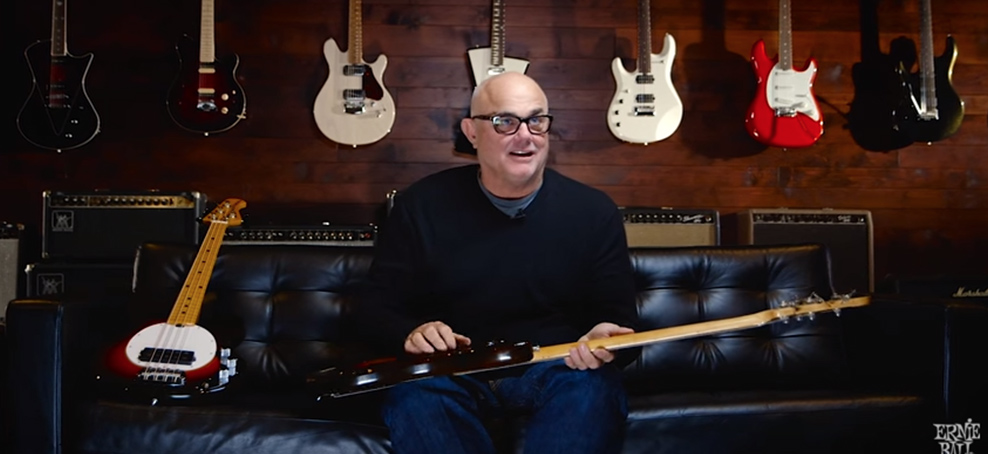“It really starts with not being content with the status quo,” Ball says. “We probably would have been fine as a family and a company with just selling Slinkys for the next handful of decades due to the legacy my grandpa and my dad built. But quite honestly, I was frustrated hearing, ‘All strings are the same,’ or, ‘They’re all made in the same factory.’ You keep hearing all these rumours that are wholeheartedly false.
“So it really was important to me, strategically and for the company as a whole, to figure out a way to really differentiate ourselves outside of the artists who use them and where they’re made; things that really are not bulletproof to compete with. I always felt that if you’ve got intellectual property, you’ve got something you can truly call your own. You can plant your flag and you can scream from the rooftops that you really are better.”
This led to the creation of innovative string families like the Cobalt, M-Steel, and Paradigm ranges. “Cobalt really started to try to figure out how to tweak the voicing of a string to make it sound louder and more punchy,” Ball says. “I was striving for something that wasn’t warm like a pure nickel string and wasn’t too shrill and bright like stainless steel. I just felt there was a voice out there, and it was a pretty stubborn process because for about eight years, we tried various alloys and different things. It was this long pursuit that we didn’t give up on as we searched for new materials with different magnetic properties.”
In figuring out how to explore the sonic properties of cobalt, the first trick was to actually get quantities of cobalt wire at the right thickness for guitar strings – no easy task when the existing smelters and wire mills are configured to make either super-fine cobalt wire for watches, or larger sizes for other uses. The only option was for Ernie Ball to do it themselves.
“We drew a blend of iron and cobalt in 2008-09 and noticed immediately that it sounded different,” Ball says. “It took a couple more years to home in, but all these little innovations that we’ve made led to new discoveries. All those years of banging our heads against the wall led to Cobalt, then that led to Aluminium Bronze for acoustic. M-Steel was pretty much the same thing: applying a lot of what we’d learned to the wrap and the core wire.
“With Paradigm we tried to take the traditional strings that people love and make them stronger for longer. We got to a point with Paradigm where a lot of the plain and core strings were breaking higher than not just guitar strings, but any fine wire that’s ever been produced. That’s why I was crazy enough to offer a guarantee with the product line.”
On the guitar side of the business, the last few years have seen some particularly unique deviations from the standard product line. Guitars like the John Petrucci Majesty and the new signature models for St. Vincent and James Valentine show that the company isn’t afraid to get weird.
“It was so much fun working with an artist like St. Vincent,” Ball says. “All the artists we work with, like Petrucci and Lukather and James Valentine, they’re all so different yet they all have this commonality in how they love the instrument. That connection that we share with them is the starting point. It’s a wide-open sketch. We’re not going to take an existing body and neck and then say, ‘Hey, what paint job do you want?’ It’s, ‘How can we make an instrument that fits your playing style to the point where you’ve got the perfect instrument for you?’ We don’t make guitars with the consumer in mind, and some might say that’s not smart, but if we do our jobs from a craftsmanship, playability, and brand presentation standpoint, and if it’s authentic to what the artist wants, generally for us that’s a pretty good cocktail.”
After more than 50 years of innovation and being part of some of the most legendary recordings in music history, that authenticity and craftsmanship remains at the heart of what Ernie Ball does.
“It really stems from a constant pursuit of resisting the status quo,” Ball says. “We’re really curious and we want to keep pushing it.”
Ernie Ball are distributed in Australia through CMC Music.

